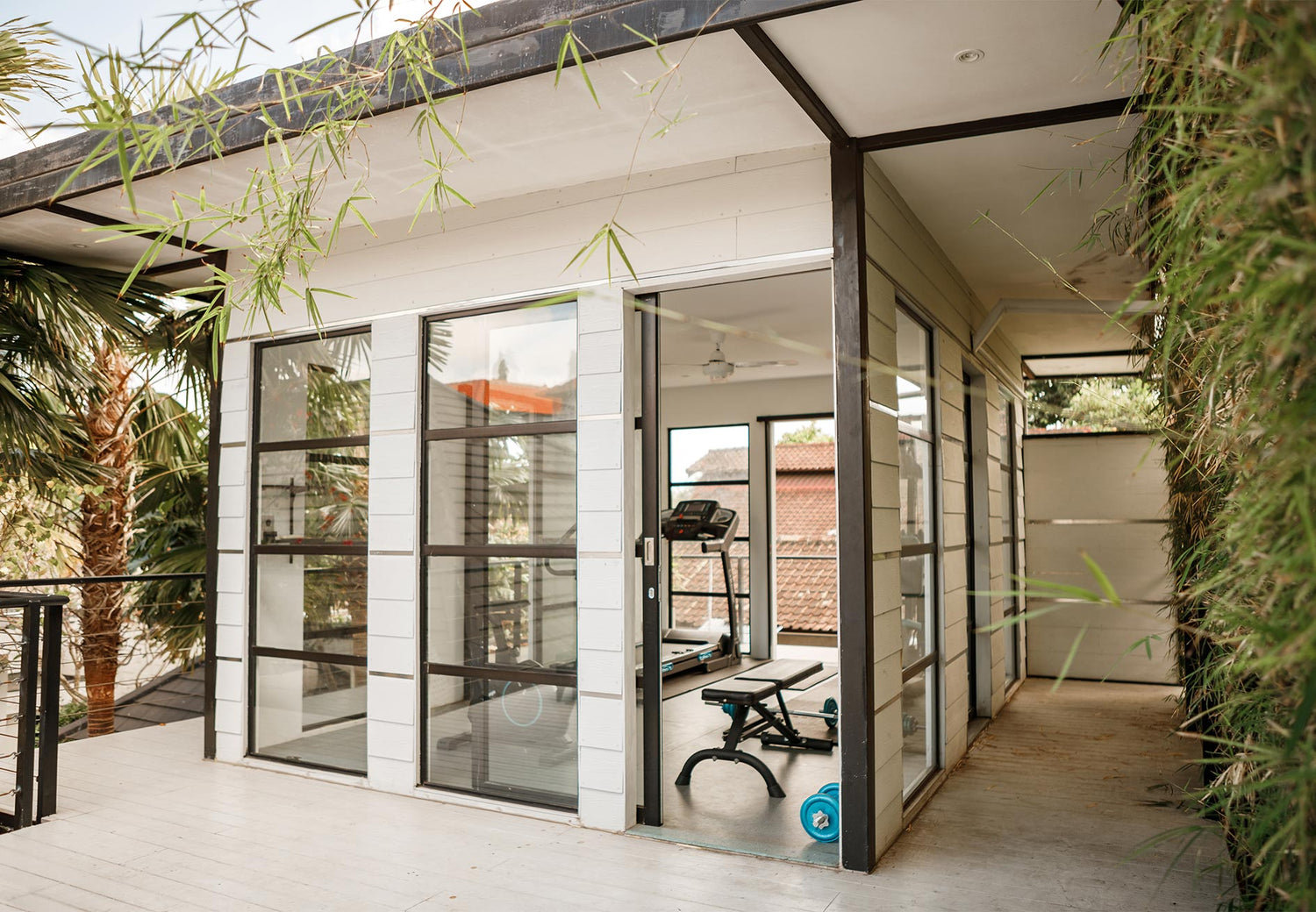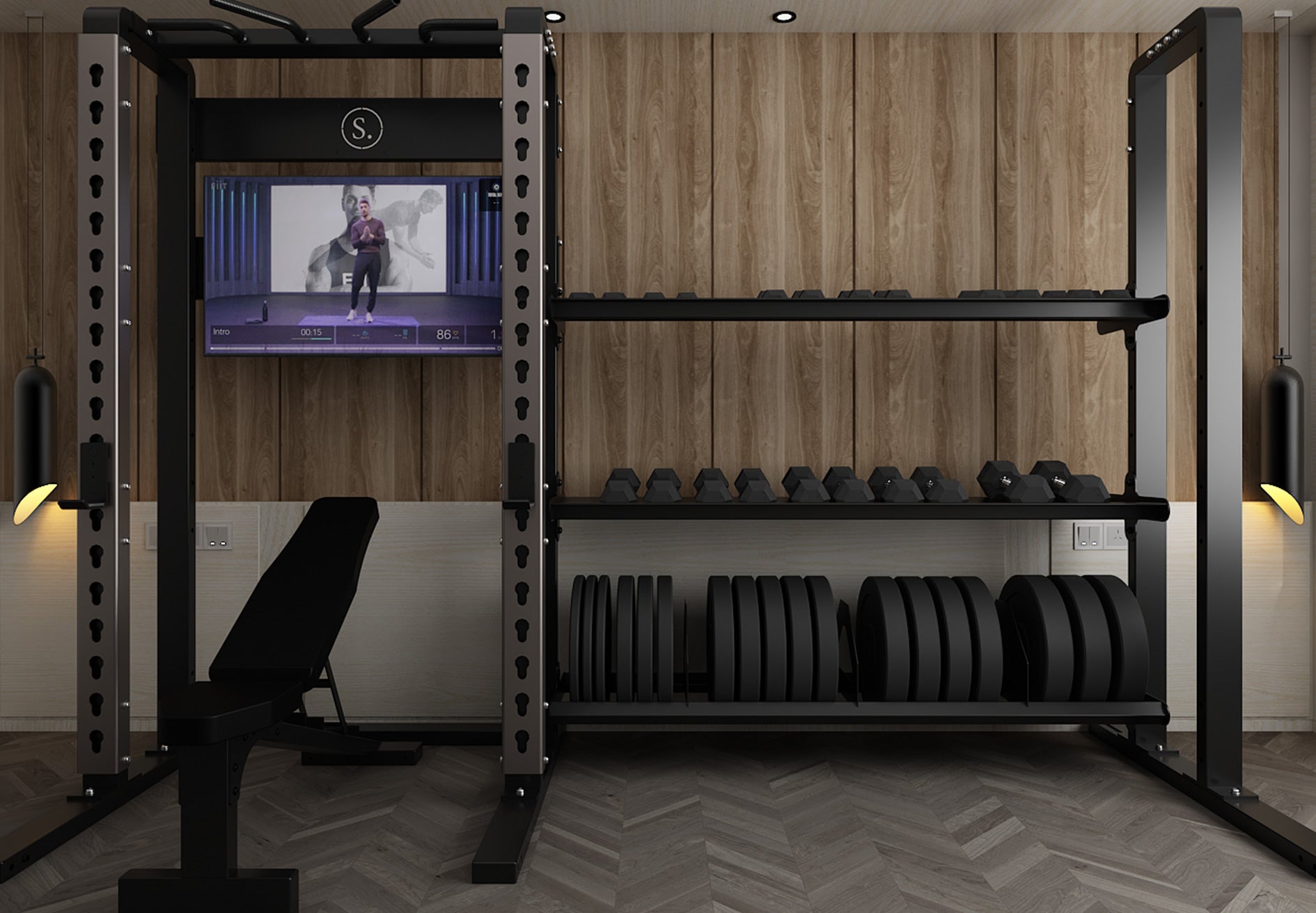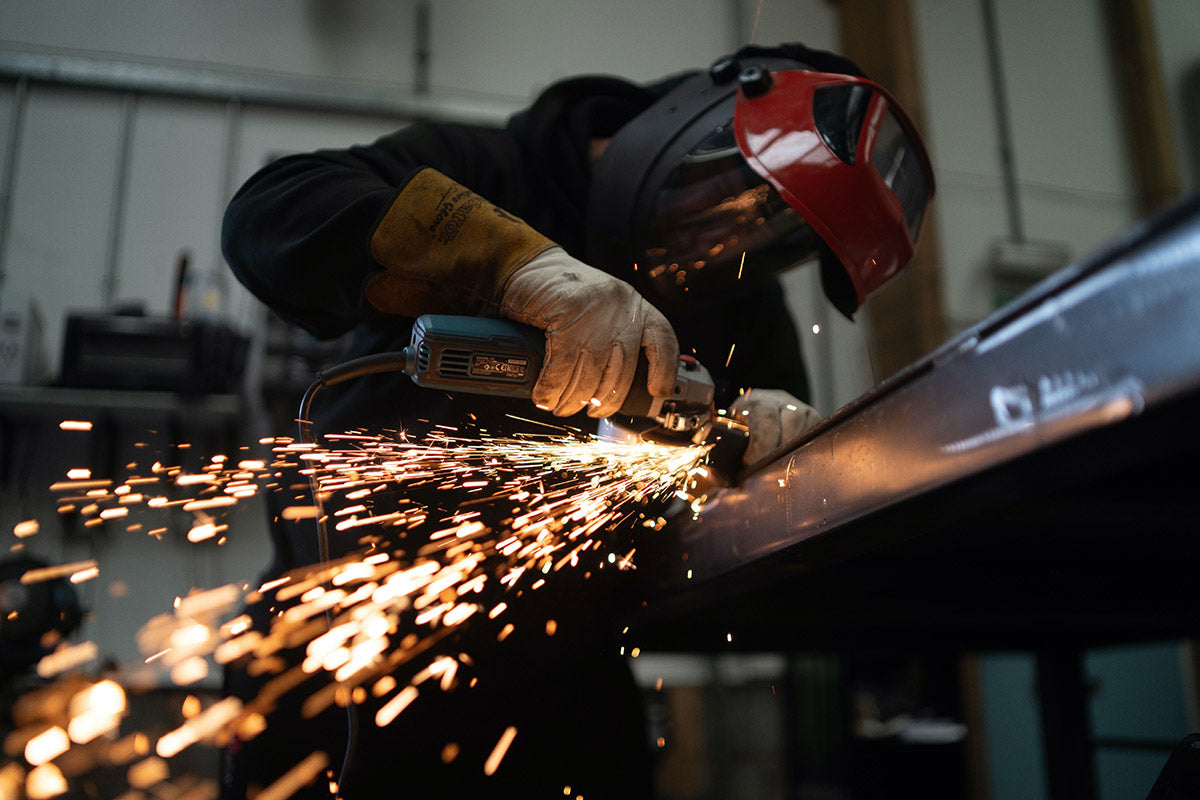Creating a great home training space admittedly isn’t rocket science for someone who loves fitness. But that doesn’t stop a lot of people ending up with underwhelming results. We’ve created this guide based on our experience designing fitness spaces for over a decade.
We’ve included some top tips, our ‘must-avoids’ and what we’ve decided are the Official Rules for Home Gym Design.

1. Plan Your Home Gym Design
Step one on our list of the official rules for creating a luxury home gym is simply plan. It’s hard to achieve your dream space if you don’t know what that is.
So many people decide they’re going to create a home gym, then before they know it, it’s full of equipment.
The planning stage is commonly skipped right past.
Taking some time browsing the web, creating a Pinterest board or even a scrapbook with some sketches is well worth the time. You may already have an idea about what equipment you want in the space, but now is the time to think bigger. Think about the following before it’s too late:
- What purpose do you want the space to serve? Is it a space full ready for intensity or a zen-filled garden of tranquility?
- How should the home gym design fit with the rest of your home? Contrast or complement?
- How should the space flow, are there multiple areas or mini zones?
- What design features might you want to incorporate? Views outside, lighting, mirrors, technology?
- What impact do you want the gym to have when you walk in the door? How can you achieve that feeling?

2. Understand Your Home Gym Members...
Is the home gym going to be your personal sanctuary or are you designing a space for the whole family to enjoy. The approach has to be different. From the look, feel, and the way the room inspires the user. To the equipment choices and space planning.
To create a training sanctuary that helps you escape the stresses and chaos of daily life we’d always suggest simple, calming and minimal design that features gentler tones throughout. Leave the brightly coloured neon in the fitness studio.
For a more family friendly space, integrated technology may bring more value along with some brighter, bolder more engaging décor. Wall graphics or portraits of sporting heroes can be a great motivation for aspiring young athletes (or older ones with waning motivation). Tread carefully though, this kind of feature can easily be overdone and is more often tacky than classy.
The home gym design doesn’t have to be a grungy basement sweatbox like so many people would have you believe. If that’s your style, then; great. Get after it and have a great time training in that kind of space.
Ultimately, it’s about you. Your style, your preferences and the things that are going to make you love training in your own home. Finding out what will bring you that joy is the first step.

3. Choose the Right Home Gym Equipment
We’ll say this a number of times, but the #1 biggest mistake we see in home gym design is over equipping the space. It seems odd for an equipment supplier to advocate buying less equipment… but nothing ruins the feel of a space more than the claustrophobic clutter caused by mountains of machines.
Not many of us have the luxury of an enormous double garage style home gym design, so you have to choose your weapons wisely. Opting for multi-function equipment that is versatile means better use of your space but can sometimes lead to compromising performance.
If you’re going to have a treadmill in the gym that’s fine. But remember you should have safety clearance behind the rear of the machine. The footprint you need for a treadmill can sometimes be upwards of 3m x 1m. If you’re working with a smaller space, that’s a lot of your home gym real estate gone in an instant.
Not only does over-equipping make the space hard to train in. It also makes it harder to clean, harder to move around and harder to enjoy.
As is so often true with interior design, less is more.

4. Project Plan Like a Professional
Back to planning, we know… Sorry.
However, another element of the planning stage that is often overlooked is the electrical requirements you’ll need in the gym space. A floorplan designating that X machine goes here, Y goes there is great… But have you considered the power requirements needed to achieve this setup?
Important note. Check the power requirements on any Cardio machines you’re buying. Spin bikes generally don’t draw from the mains, but with more integrated technology these days, this is becoming more common. Some treadmills even require that they’re run on a dedicated spur – we’d suggest checking in with an electrician if you’re unsure about any of this.
A really irritating feature we see those home gyms that are 90% perfect is a mess of cabling running across the floor, up the wall and round corners. Everyone loves their digital training setup with a timer, sound-system, integrated TV screen etc. It’s worth speaking to an electrician on this before making the place look a mess.

5. Balance Form and Function in Your Home Gym
Yes, it looks good… but are you ever actually going to use it?
The home gym is a space where we believe form and function need to live in harmony.
A gym that looks great but doesn’t help you achieve your training goals is pointless. A gym that has all the tools you need to train like Arnold Schwarzenegger, but you hate being in the room. Also, pointless.
Be prepared to compromise on one or the other of these things. If a wall mounted TV or mirror wall will increase the number of hours you spend training by 20% a year, but you’ll lose out on a pull up bar, is it worth it? Only you can know that answer for your own space.

6. Smart Storage for Home Gym Equipment
Clutter kills style. An organised home gym is 10x more likely to be stylish. Mess is never the way to create a luxury training space. This is why we’re huge advocates of smart storage solutions.
When every item has a purposeful storage space, it’s more likely to end up there after a workout. Think about wall mounting as a storage option because in smaller gyms it eats up less floor space than freestanding storage racks.
Where storage can be integrated into other equipment or multiple types of equipment can be stored on one rack, consider this as a space saving option.

7. Know Your Home Gym Style
Knowing what type of gym you’re trying to create is key in achieving it. Create Pinterest boards, scrapbooks and save screenshots. It’ll help you in making your decisions and design choices over time.
We know that the dream home gym doesn’t just happen overnight. Sometimes the urge to complete the project or get the gym finished means you’ll settle for the equipment that’s available right that second, rather than the equipment you really love.
Truly spectacular home gym spaces have a vision, and their owners use that as a guiding light to create it over time.

8. Get Your Gym Design. Your Way.
Don’t be afraid to ask for your equipment exactly how you like it. Many equipment suppliers focus on moving high volumes of commoditised equipment. However, if you find the right one, they might be open to manufacturing your equipment just the way you want it.
At Solo we know how important your investment in premium gym equipment is. That’s why we’re happy to do whatever we can to provide the gold standard solution for our customers.
If you need a bespoke colour or altered dimensions to meet the requirements of your space. Just ask!
Although our products are only shown in a few colour options, we have a range of more than 500 powder coating finishes. So it’s not much trouble finding you the perfect shade.
Find out more about our manufacturing.

10. Avoid These Home Gym Design Disasters
Watch out for these common home gym design mistakes.
Protect your flooring. Even if you’re not planning to drop 100kg barbells from overhead, accidents happen. You’d be surprised at the damage even mid-range dumbbells being dropped can cause to residential unprotected floors.
Home gym flooring doesn’t always have to be black matting either. If you’re interested in a more premium protective flooring, befitting of your luxury gym. Let us know and we can share some ideas.
Check the ceiling height. There is nothing more disappointing than building your new piece of fitness equipment, to discover that the room doesn’t have the ceiling height to allow your new toy.
The most common mistake here is measuring the floor to ceiling height before installing flooring! Adding a 40mm floor tile can be the difference between a great home gym and an expensive return shipping bill.
Take care when wall mounting equipment. We always suggest you seek advice from a builder or joiner when installing wall mounted equipment. Using the correct tooling and installing in the correct location is so important if you want to avoid a nasty workout incident and potential damage to your property.
Always ask us if you’re not sure!
Our Official Rules for Home Gym Design
We really hope this guide has been useful.
Share your home gym design stories with us on Instagram @solohomegym.




